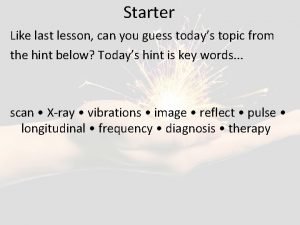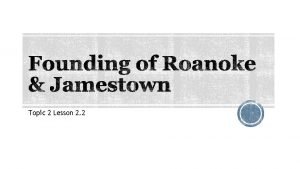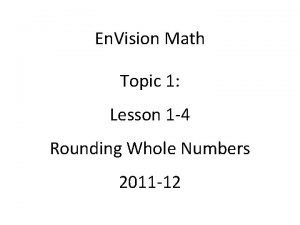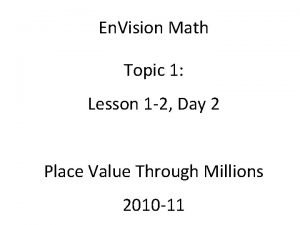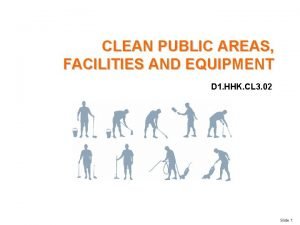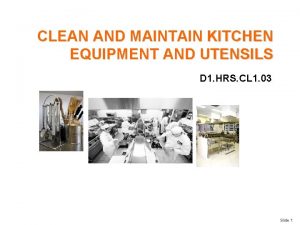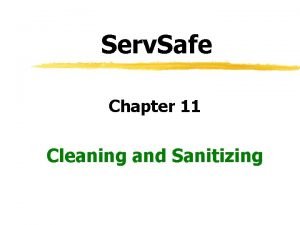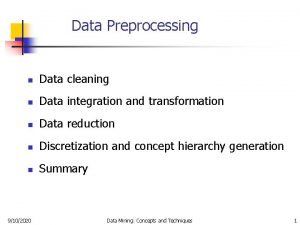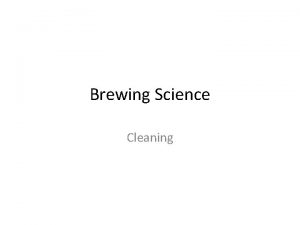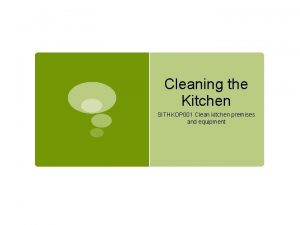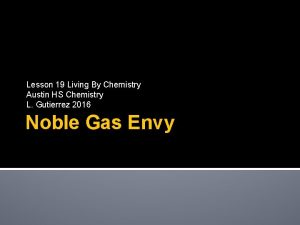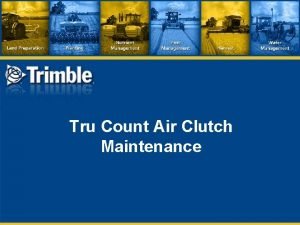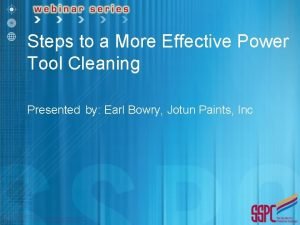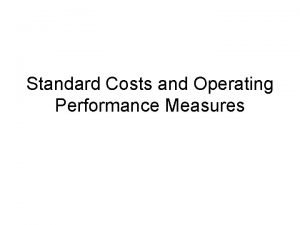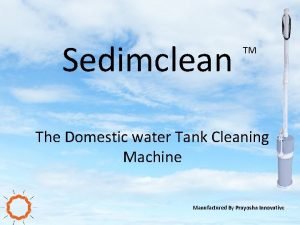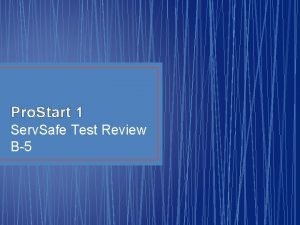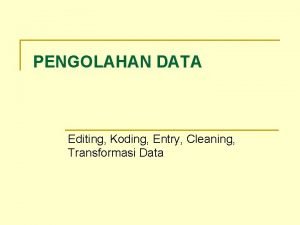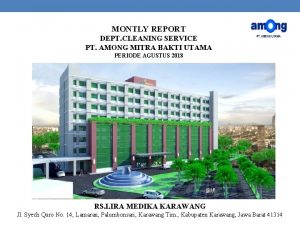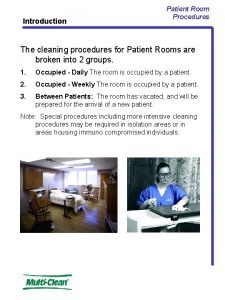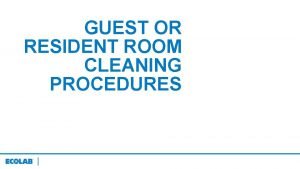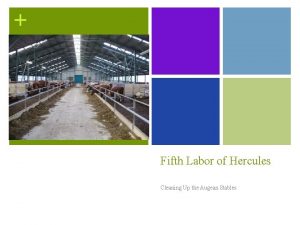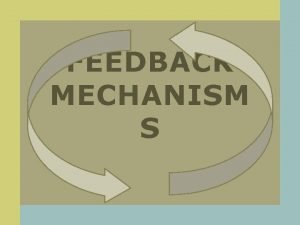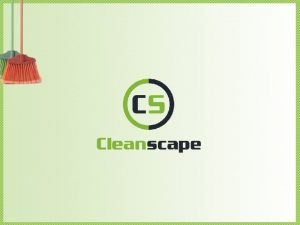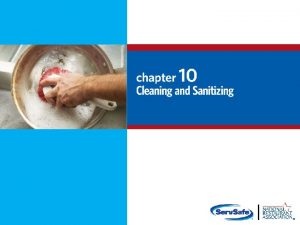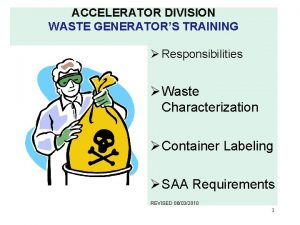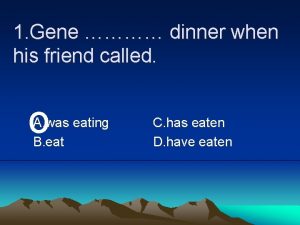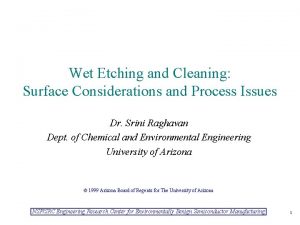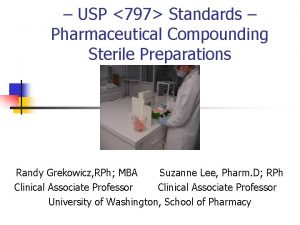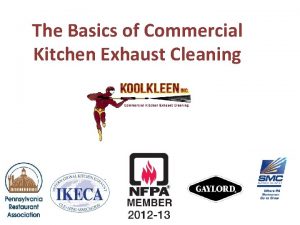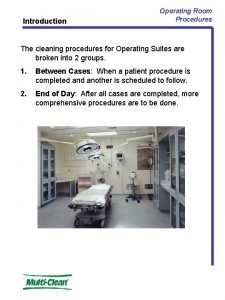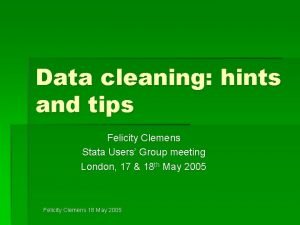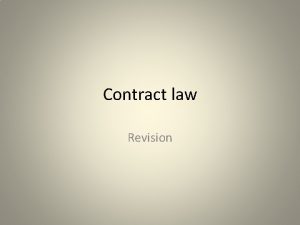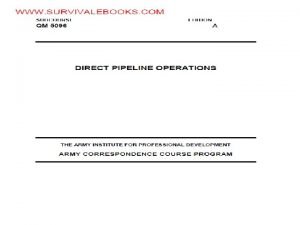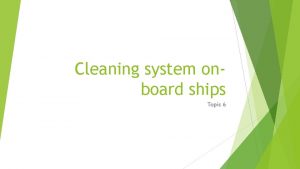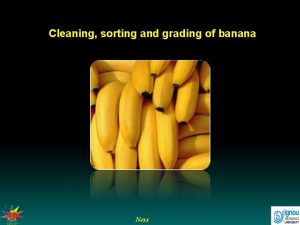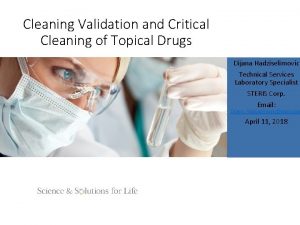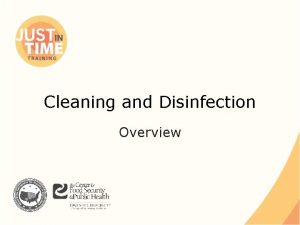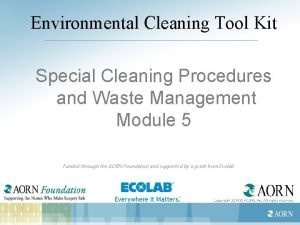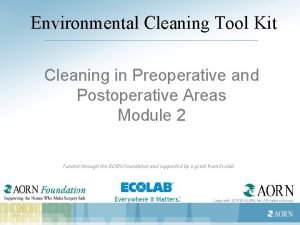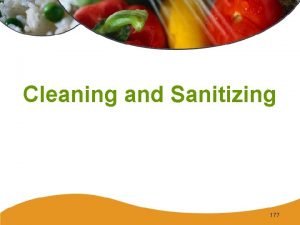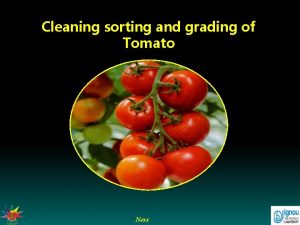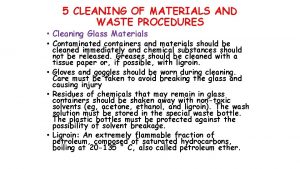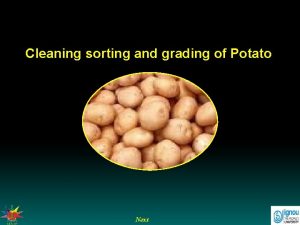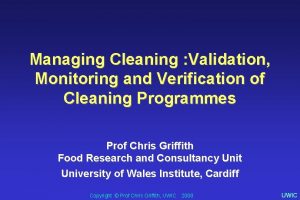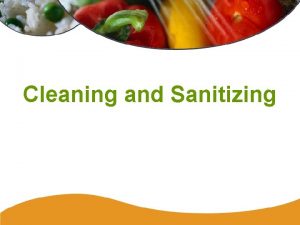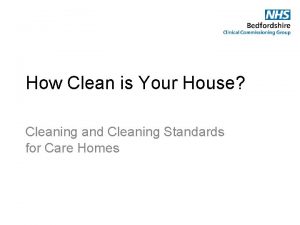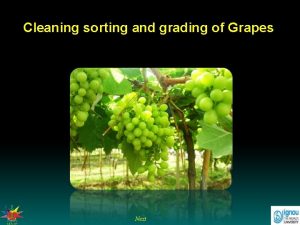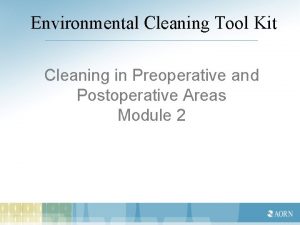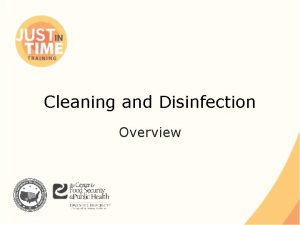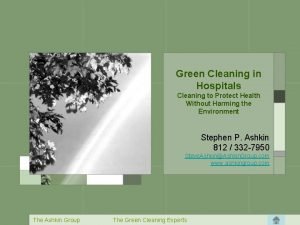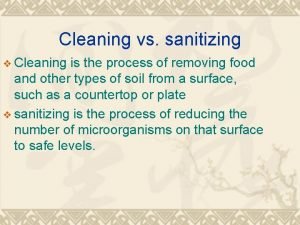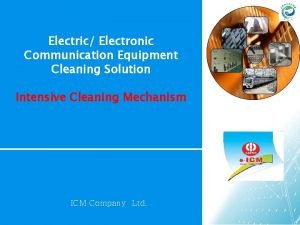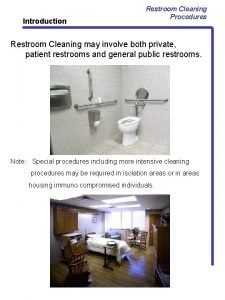Lesson Topic 3 1 CLEANING AND GAS FREEING

























































- Slides: 57

Lesson Topic 3. 1 CLEANING AND GAS FREEING 1

Lesson Topic 3. 1, Cleaning and Gas Freeing INTRODUCTION As Gas Free Engineering Personnel you will be expected to know the various methods available to clean tanks and requirements to make them gas free. 2

Lesson Topic 3. 1, Cleaning and Gas Freeing ENABLING OBJECTIVES b Describe the procedures, equipment and personnel safety precautions used with the Butterworthing method, Chemical cleaning, Steam Cleaning, and Hot or Cold washing in accordance with NSTM Chapter 074 Vol. 3, Gas Free Engineering, NSTM Chapter 631 Vol. 2, Preservation of Ships in Service - Surface Preparation and Painting, Manual for Cargo Tank Cleaning and OPNAVINST 5100. 19, series. 3

Lesson Topic 3. 1, Cleaning and Gas Freeing ENABLING OBJECTIVES b Describe the cleaning process, testing, safety precautions and procedures required for entry into DFM/F-76, CHT, JP-5, and Gasoline tanks, in accordance with NSTM Chapter 074 Vol. 3, Gas Free Engineering, NSTM Chapter 631 Vol. 2, Preservation of Ships in Service - Surface Preparation and Painting, NSTM Chapter 541, Ship Fuel and Fuel Systems and OPNAVINST 5100. 19, series. 4

Lesson Topic 3. 1, Cleaning and Gas Freeing Tank Cleaning 5

Lesson Topic 3. 1, Cleaning and Gas Freeing Tank Cleaning Requirements • • Maintenance cleaning Tank inspection or minor repair Shipyard overhaul or major repair Change of cargo After a contaminated cargo Preparation for loading Preparation for ballasting Activation and inactivation of vessel 6

Lesson Topic 3. 1, Cleaning and Gas Freeing Tank Cleaning b Spaces like fuel tanks are normally cleaned in a properly equipped shore support facility. • Only properly equipped ships like oilers will clean such spaces as a matter of normal routine. 7

Lesson Topic 3. 1, Cleaning and Gas Freeing Tank Cleaning Gas Free Engineer responsibilities • • Initial testing and evaluation of the space. Prescribing conditions of entry for cleaning. NOTE: The GFE will know the various cleaning methods for any given circumstance, in order to evaluate any hazard that may develop during or after cleaning. 8

Lesson Topic 3. 1, Cleaning and Gas Freeing Tank Cleaning Gas Free Engineer responsibilities • • Issuance of a provisional certificate Specifying conditions during cleaning Testing and evaluation of the space after cleaning. Collaboration, when necessary, with cleaning personnel. 9

Lesson Topic 3. 1, Cleaning and Gas Freeing Tank Cleaning Precautions prior to tank cleaning • Inspecting personnel 10

Lesson Topic 3. 1, Cleaning and Gas Freeing Tank Cleaning Precautions prior to tank cleaning • Inspecting personnel – Proper clothing – Proper equipment NOTE: The safety observer should have a list of the equipment to be allowed into the space. 11

Lesson Topic 3. 1, Cleaning and Gas Freeing Tank Cleaning Precautions prior to tank cleaning • Inspecting personnel – Proper clothing – Proper equipment NOTE: The safety observer should have a list of the equipment to be allowed into the space. – Not intoxicated or on drugs 12

Lesson Topic 3. 1, Cleaning and Gas Freeing Tank Cleaning Precautions prior to tank cleaning • Common hazards – Use caution when entering or leaving tanks to avoid are slipping or falling, low overheads, and electrical shock. • Physical hazards can be avoided by – Proper instruction of personnel – Good judgement – Constant alertness 13

Lesson Topic 3. 1, Cleaning and Gas Freeing Tank Cleaning Safety equipment • Tending lines – Prevent lines and hoses from becoming tangled. – Do not pull on hoses – Do not climb on pipes 14

Lesson Topic 3. 1, Cleaning and Gas Freeing Tank Cleaning Safety equipment • Provide sufficient lighting – Explosive proof – Cables should be tied up – Scaffolding – Ladders with non-skid tips – Safety nets, belts 15

Lesson Topic 3. 1, Cleaning and Gas Freeing Tank Cleaning Safety precautions • Ensure that NO: – STEAM is admitted to tank with personnel inside – HIGH PRESSURE WATER is directed through manhole with personnel inside. 16

Lesson Topic 3. 1, Cleaning and Gas Freeing Tank Cleaning Safety precautions • Always be aware of potential danger due to the extremely hazardous situation inside a dark fuel tank. 17

Lesson Topic 3. 1, Cleaning and Gas Freeing Tank Cleaning Applications 18

Lesson Topic 3. 1, Cleaning and Gas Freeing Tank Cleaning Applications b Many effective cleaning methods may be used to clean a confined or enclosed space. 19

Lesson Topic 3. 1, Cleaning and Gas Freeing Tank Cleaning Applications b Selection of method may be governed by: • • Materials available The product involved (cleaning agent) Time allotted Tank condition 20

Lesson Topic 3. 1, Cleaning and Gas Freeing Tank Cleaning Applications Chemical cleaning • Effective when used in conjunction with the Wheeler method. • Suitable method of employing chemicals will be governed by: – Type of cleaning – Equipment available – Time allotted 21

Lesson Topic 3. 1, Cleaning and Gas Freeing Tank Cleaning Applications Chemical cleaning • Regardless of the method, all personnel shall be thoroughly indoctrinated in safe handling of: – Chemical solvents – Emulsifiers 22

Lesson Topic 3. 1, Cleaning and Gas Freeing Tank Cleaning Applications Butterworthing 23

Lesson Topic 3. 1, Cleaning and Gas Freeing Tank Cleaning Applications Butterworthing • Requires heated water (or cleaning oil) – High pressure (175 PSI) – Revolving nozzle – Water temperature 165 -185°F 24

Lesson Topic 3. 1, Cleaning and Gas Freeing Tank Cleaning Applications Butterworthing • Nozzle raised and lowered 25

Lesson Topic 3. 1, Cleaning and Gas Freeing Tank Cleaning Applications Butterworthing • Tank stripped continuously until the bottom is free of water, with the nozzle stream stirring sediment. 26

Lesson Topic 3. 1, Cleaning and Gas Freeing Tank Cleaning Applications Butterworthing • Water is supplied through specially constructed ground hose. 27

Lesson Topic 3. 1, Cleaning and Gas Freeing Tank Cleaning Applications Steam cleaning • Most thorough method of cleaning tanks. • Consists of melting down materials • No set procedure can be established to suit all fuel tanks 28

Lesson Topic 3. 1, Cleaning and Gas Freeing Tank Cleaning Applications Steam cleaning • Temperature of tank walls during steam cleaning must not be allowed to exceed 230°F. CAUTION: Excessive temperature may cause buckling of walls, warping or cracking of structures, and may also dangerously overheat flammable or combustible materials within boundary spaces. . 29

Lesson Topic 3. 1, Cleaning and Gas Freeing Tank Cleaning Applications Steam cleaning • Caution must be used when attempting to steam clean tanks. • Tanks containing gasoline must be steam cleaned. 30

Lesson Topic 3. 1, Cleaning and Gas Freeing Tank Cleaning Applications Water washing • • Method of cleaning using water under pressure In most instances, tanks containing hydrocarbons must be thoroughly steamed or treated with cleaning compounds before being washed. 31

Lesson Topic 3. 1, Cleaning and Gas Freeing Method of Gas Freeing DFM / F-76 / JP-5 Tanks and CHT systems 32

Lesson Topic 3. 1, Cleaning and Gas Freeing DFM / F-76 / JP-5 Tanks and CHT systems b Written permission from the Commanding Officer is required to open tanks. b Remove manhole cover. • If presence of hydrocarbon vapors is suspected, use non-sparking tools. 33

Lesson Topic 3. 1, Cleaning and Gas Freeing DFM / F-76 / JP-5 Tanks and CHT systems b Test for oxygen deficiency • Do not enter tank • Use drop check method 34

Lesson Topic 3. 1, Cleaning and Gas Freeing DFM / F-76 / JP-5 Tanks and CHT systems b Test for combustible vapors • Do not enter tank • Use drop check method 35

Lesson Topic 3. 1, Cleaning and Gas Freeing DFM / F-76 / JP-5 Tanks and CHT systems b Test for toxic conditions • Do not enter tank • Use drop check method 36

Lesson Topic 3. 1, Cleaning and Gas Freeing Gas free engineer is responsible for: • • Testing tank every eight hours or as necessary Inspecting tanks for cleanliness Ensuring safe atmospheric conditions exist Certifying tank: Safe for Personnel Safe for Hot Work 37

Lesson Topic 3. 1, Cleaning and Gas Freeing Sewage Collection, Holding, and Transfer Systems • A heavy blanket of organic sludge can accumulate on the bottom of a tank during routine CHT operations. • The underlying layer of sludge generates hazardous gases -- hydrogen sulfide and methane 38

Lesson Topic 3. 1, Cleaning and Gas Freeing Sewage Collection, Holding, and Transfer Systems • Potential hazards exist when personnel are working on, or in, an open tank. • Enforce safety precautions to ensure that health and well being of personnel are protected. 39

Lesson Topic 3. 1, Cleaning and Gas Freeing Sewage Collection, Holding, and Transfer Systems • CHT tank inspection and maintenance requiring tank entry. NOTE: All procedures for preparing a CHT tank for cleaning must be followed and adhered i. a. w. written procedures 40

Lesson Topic 3. 1, Cleaning and Gas Freeing Sewage Collection, Holding, and Transfer Systems • Safety precautions for personnel prior to tank opening: – Wear approved respiratory equipment 41

Lesson Topic 3. 1, Cleaning and Gas Freeing Sewage Collection, Holding, and Transfer Systems • Safety precautions for personnel prior to tank opening: – Two people will be outside the tank to: – Constantly observe personnel inside – Render assistance if required – Provide spare respiratory equipment for immediate use 42

Lesson Topic 3. 1, Cleaning and Gas Freeing Sewage Collection, Holding, and Transfer Systems • After opening tank – Test the atmosphere of the space – O² – Explosive – Toxics – If the tank is not gas free, repeat the washdown procedures; retest and certify gas free if safe. 43

Lesson Topic 3. 1, Cleaning and Gas Freeing Sewage Collection, Holding, and Transfer Systems – Recertification is made periodically: – No more than every eight hours and each time the ship moves or as specified by the GFE. 44

Lesson Topic 3. 1, Cleaning and Gas Freeing Sewage Collection, Holding, and Transfer Systems • Ventilation – Force ventilate continuously taking suction from bottom of tank and discharging directly to weather deck. – Make one complete air change every three minutes. 45

Lesson Topic 3. 1, Cleaning and Gas Freeing Sewage Collection, Holding, and Transfer Systems • Before tank entry – Force ventilate for 30 minutes. – Clean thoroughly without entering – Continue ventilation during washdown – Gas Free Engineer tests tank. – If conditions are unsafe, continue ventilation and washdown until certified and safe. 46

Lesson Topic 3. 1, Cleaning and Gas Freeing Sewage Collection, Holding, and Transfer Systems • Equipment and clothing worn by personnel for tank entry. – Respiratory protection – Coveralls (white CHT) – Boots – Gloves – Head covering 47

Lesson Topic 3. 1, Cleaning and Gas Freeing Gasoline Tanks • Protective equipment required for tank entry: – Respiratory equipment – Protective clothing (light-colored material coverall ) – Acid-resistant boots – Acid-resistant gloves 48

Lesson Topic 3. 1, Cleaning and Gas Freeing Gasoline Tanks • All spaces into which gasoline vapors issue must be constantly and thoroughly ventilated. WARNING: BREATHING AIR RICH IN GASOLINE VAPORS CAN CAUSE DEATH. 49

Lesson Topic 3. 1, Cleaning and Gas Freeing Gasoline Tanks • No person shall enter a gasoline storage tank for any purpose without obtaining the Commanding Officer's permission each time. 50

Lesson Topic 3. 1, Cleaning and Gas Freeing Gasoline Tanks • Procedures for entering a tank certified gas free and safe – Enter the tank and remove remaining sludge NOTE: If only one person enters a tank, a safety harness and tending line must be used. 51

Lesson Topic 3. 1, Cleaning and Gas Freeing Gasoline Tanks • After sludge removal and tank cleaning – Retest and certify gas free and safe, or unsafe. – If unsafe then ventilate and repeat washdown procedures until certified gas free and safe. 52

Lesson Topic 3. 1, Cleaning and Gas Freeing Gasoline Tanks • If safe, Work can now continue inside the tank without respiratory equipment with: – Continuous ventilation – GFE approval 53

Lesson Topic 3. 1, Cleaning and Gas Freeing Gasoline Tanks • The frequency of testing to be performed is stated on the gas free certificate. WARNING: No welding or hot work shall be performed on the tank until the Gas Free Engineer certifies the tank is safe for hot work. 54

Lesson Topic 3. 1, Cleaning and Gas Freeing REVIEW AND SUMMARY 55

Lesson Topic 3. 1, Cleaning and Gas Freeing Review and Summary b Tank Cleaning Applications b Method of Gas Freeing DFM / F-76 / JP-5 Tanks and CHT systems 56

Lesson Topic 3. 1, Cleaning and Gas Freeing ANY QUESTIONS? 57
 Example of a clincher
Example of a clincher Narrow down topic
Narrow down topic Data cleaning lesson
Data cleaning lesson Gas law
Gas law Difference between ideal gas and real gas
Difference between ideal gas and real gas Derive ideal gas equation
Derive ideal gas equation An ideal gas is an imaginary gas
An ideal gas is an imaginary gas Sutherland's law
Sutherland's law Poisonous gas leaked in bhopal gas tragedy
Poisonous gas leaked in bhopal gas tragedy Gas leaked in bhopal gas tragedy
Gas leaked in bhopal gas tragedy Volume molare
Volume molare Flue gas desulfurisation gas filter
Flue gas desulfurisation gas filter Poisonous gas leaked in bhopal gas tragedy
Poisonous gas leaked in bhopal gas tragedy Reaksi pembentukan gas no2f dari gas no2 dan f2
Reaksi pembentukan gas no2f dari gas no2 dan f2 Gas exchange key events in gas exchange
Gas exchange key events in gas exchange Guess the topic of the lesson
Guess the topic of the lesson Lesson 5 american influence grows
Lesson 5 american influence grows Topic 2 lesson 2
Topic 2 lesson 2 160 656 rounded to the nearest hundred thousand
160 656 rounded to the nearest hundred thousand Lesson vs topic
Lesson vs topic Topic 1 lesson 1-2
Topic 1 lesson 1-2 Data quality and data cleaning an overview
Data quality and data cleaning an overview Cleaning public areas facilities and equipment
Cleaning public areas facilities and equipment Cleaning and maintaining kitchen premises
Cleaning and maintaining kitchen premises What information should a master cleaning schedule contain
What information should a master cleaning schedule contain Data quality and data cleaning an overview
Data quality and data cleaning an overview Data quality and data cleaning an overview
Data quality and data cleaning an overview Etl in data cleaning and preprocessing stands for
Etl in data cleaning and preprocessing stands for Cleaning and sanitation manual for breweries
Cleaning and sanitation manual for breweries Sithkop001
Sithkop001 Cleaning the tides of san diego and tijuana
Cleaning the tides of san diego and tijuana Lesson 19 noble gas envy ions answers
Lesson 19 noble gas envy ions answers Tru count clutches
Tru count clutches Power tool cleaning
Power tool cleaning Standard cost is a
Standard cost is a Sedimclean water tank cleaning machine
Sedimclean water tank cleaning machine A cook uses a cleaning towel
A cook uses a cleaning towel Editing coding entry cleaning
Editing coding entry cleaning Pt.among mitra bakti
Pt.among mitra bakti Hospital room cleaning procedures
Hospital room cleaning procedures Cleaning methods
Cleaning methods Cleaning your room
Cleaning your room The fifth labor involved cleaning the
The fifth labor involved cleaning the Negative feedback mechanism
Negative feedback mechanism Essentialassesment
Essentialassesment Objectives of cleaning program
Objectives of cleaning program Trashable cleaning products examples
Trashable cleaning products examples He have dinner when his friend called
He have dinner when his friend called Wet etch clean and filter
Wet etch clean and filter Usp 797 laminar flow hood cleaning
Usp 797 laminar flow hood cleaning Commercial kitchen exhaust cleaning philadelphia pa
Commercial kitchen exhaust cleaning philadelphia pa Woodard cleaning
Woodard cleaning Potter's wheel data cleaning tool
Potter's wheel data cleaning tool Operating room cleaning procedures
Operating room cleaning procedures Agent peas
Agent peas Pictures of unsafe dented cans
Pictures of unsafe dented cans Data cleaning stata
Data cleaning stata Oscar chess v williams
Oscar chess v williams















